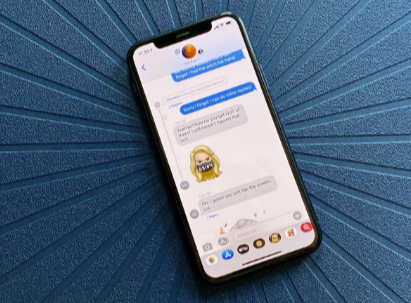AI in Music Streaming Services: Making Your Playlist Truly Personal
If you’ve ever pressed “play” on a music streaming app and thought, “Wow, this is exactly what I needed,” you’re not alone—and it’s not an accident. That eerie knack of your go-to app to play just the right mood at just the right moment is all thanks to artificial intelligence (AI).
Today, music isn’t just streamed. It’s not just aligned to your mood, but also curiously curated, and specially matched—usually unwittingly. Every “Discover Weekly,” “Daily Mix,” or surprise playlist recommendation has a high-powered AI engine behind it, working its digital magic. So how do you do it? And how do you get the most out of it?
Let’s dive into how AI for music is reshaping the way we listen, one personalized playlist at a time.
The Science Behind Smart Playlists
Music streaming services like Spotify, Apple Music, Amazon Music, and YouTube Music employ AI algorithms to learn your listening patterns. It’s not just what songs you play—how long you listen, what songs you skip, when in the day you press play, and even where you are.
See also: The Rise of Voice Technology: How Smart Assistants Are Changing Our Lives
At their center are two general types of algorithms:
- Collaborative Filtering – It looks at your listening habits and cross-checks them with other people with similar tastes. If group of individuals who love Artist A also like Artist B, the system might recommend Artist B to you.
- Content-Based Filtering – It looks at the inherent attributes of the songs you enjoy—tempo, genre, key, lyrics, and instrumentation—to recommend similar songs.
Combined with deep learning models, such filtering methods generate a personalized listening experience that adapts to your routines.
Real-World Impact: Stats That Tell a Story
The data tells a strong story. From a 2024 report by MIDiA Research:
- More than 60% of music discovery among Gen Z listeners currently occurs through algorithmic playlists.
- Personalized playlists account for more than 35% of all streams on the leading platforms.
- Users are 2.5 times more likely to save or replay songs they find through AI-recommended playlists compared to editorial playlists.
Clearly, AI is not just a back-end gimmick—it’s a core feature that affects the way we listen to music.
How to Make AI Work for Your Playlist
Need a turbo charge for your recommendations? Here are some practical tips that can make AI learn your taste a bit better:
1. Don’t Just Stream—Engage
Like, dislike, skip, or save tracks. These are your likes. The more you use it, the more accurate the suggestions.
2. Create and Follow Playlists
Creating your own playlists and following others‘ tells the algorithm more. It knows what genres, speeds, and artists you enjoy.
3. Use the “Radio” and “Mix” Features
Features like Spotify’s “Artist Radio” or Apple Music’s “Get Up! Mix” are training grounds for AI. Use them every day to help refine your profile.
4. Give Feedback
There are websites that allow you to give thumbs up/down or favorite tagging. Use these features to affirm or correct your algorithmic profile.
The Emotional Intelligence of AI
The fascinating part is that AI isn’t merely cold, analytical predictions—it’s starting to “feel.” Well, kind of.
With sentiment analysis, now AI can be programmed to interpret song lyrics and categorize them by mood—happy, sad, high-energy, relaxing. Combine it with time-of-day routines, and your app would start to start recommending lo-fi beats at nighttime or pop at morning.
Spotify’s “Mood Detection” and Deezer’s “Flow” mode are just two demonstrations of how emotional intelligence is entering the toolkit of AI. These machines are learning to equate your world within with the worlds outside.
Music Discovery Without the Burden
Let’s be honest: There is a great deal of music available. As of 2025, Spotify alone uploads more than 120,000 new songs each day. Trudging through that by hand? Not gonna happen.
AI helps us cut through the noise. AI is your personal music concierge, slicing the deluge into bite-sized streams of new, relevant songs. From bringing unknown artists a click away or uncovering lost songs, AI is transforming the way we experience sound.
The Future: Hyper-Personalized Experiences
What will the next generation of AI-powered music sound like? Some trends to watch:
- Contextual Playlists – Imagine AI making playlists not just by taste, but by your calendar, weather, or even your wearable fitness monitor.
- Voice-Activated Curation – Amazon Alexa and Apple’s Siri are getting better at understanding music-related voice commands. You might soon be able to say, “Play something retro but upbeat,” and get exactly that.
- Generative Music – Sites are breaking new ground with AI that generates new music live to your preference. Picture mood-synchronized soundscapes designed specifically for your moment.
Last Thoughts: AI as a Musical Companion
AI music streaming isn’t about replacing human taste—about enriching it. Those algorithms don’t decide for you. They learn alongside you, and your listening life gets richer, more instinctual, and more tied to who you are.
So the next time you are dancing to a well-timed playlist, give a small nod to the AI behind. It may not have ears, but it definitely gets you.






